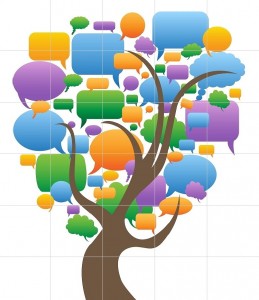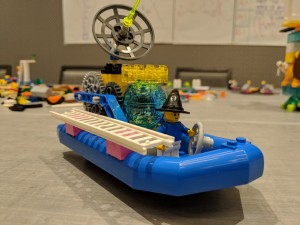
CULTURE CURIOUS GLOBAL MINDS – the official community blog site of StrategicStraits, Inc.
The Culture Curious Global Minds Blog is a site where internationally working professionals meet, learn and create together.
We created this site as a complimentary learning opportunity in addition to the Culture Curious Global Minds Linked-in Group. Click here to join the Linked-in Group.
For weekly Turkey/U.S. Bilateral & Bilingual Business News and Dialogue, please visit the Kahve Arası/Coffee Break Blog.
 “A society without the dreams of children stops having a future.”
“A society without the dreams of children stops having a future.”
We are more interconnected than ever. We are on social media, connected through data and artificial intelligence, the Internet of Things, podcasts, 24-hour news, trade agreements (regardless of how they’re changing), global travel opportunities.
We are more connected across the world but also more polarized than ever. We have different views on data privacy, regulation, nationalism, trade, corruption and even family relationships.
Needless for me to say is I find value in incorporating a global mindset and quantum negotiation not only in our professional but also personal lives. The critical questions are why and how.
It may be best to start as simple as possible. Does something matter to you at a very deep level? So much that it feels almost paralyzing not to be in touch with the matter? Why does this matter to you so much? Do you need others to help you explore this matter?
Something that matters to me very much is the need not to have active shooter drills in schools anymore. A rather local matter but one that sadly has globalizing applicability and can benefit from the experiences of diverse societies and communities. So, I share this here on this global platform.
I do not only want to see students, teachers, school administrators not get killed. I want our children to live in a world where they feel safe in a school environment again. Why? The school is the place where our children’s dreams get their wings, where they gain confidence, where their dreams are born. A society without the dreams of children stops having a future. Our children deserve better, our society deserves better.
How am I however going to ever resolve my matter? I can’t make it happen on my own. “We need to eliminate the guns or we need to improve the mental health of our society” are two thoughts our society articulates. Both thoughts make sense. What can I personally do to improve the situation? My matter needs attention. Twenty years have passed since the Columbine shooting. Almost a dozen deadly mass school shootings since then and hundreds of others we haven’t heard about because of fewer casualties or events that derailed even my attention from my important matter. The guns are still here. Reports on increased insomnia, depression, loneliness, violent behavior and suicide rates are frequent topics in the news and routine medical surveys.
My question remains unresolved. How can I have a peace of mind again? Well…I don’t know if I am asking the right question here. Who would not want to have a peace of mind again? Who would not want their children to go to a school where there is absolutely no need for active shooter drills? Doesn’t it seem like we have more in common than not? Data shows. Most Americans support some sort of enhanced gun control reform. Many don’t see the need for weapons of war in civil use. As a matter of fact, this is frightening.
We still cannot stop the need for active shooter drills in our schools. Why? Could it be because we wait? We wait for the conversations to take place. We wait because we feel powerless without a political answer to this question. We wait. Another tragedy. And we wait. My matter is not only critical. Researchers say it is an epidemic. It is an epidemic. It needs an urgent resolution. Why do we wait?
There is no reason why we should not have some crucial conversations more often. Is there? We are the people. We are affected. Our children need to endure the active shooter drills because we hope that they will be safe in a tragedy or we are told that this will reduce risk. Our children are affected. They endure the active shooter drills thinking this is the way it needs to be, hoping that they are ready for the moment, or that the moment may never come. They adapt. They have hope. They are children. Do they adapt? Do they have hope? We are affected. Data shows. Mental health challenges are not confined to the world of adults anymore. I am deeply saddened, puzzled and honestly, ashamed when my children report about their active shooter drill. How do you feel when your children or grandchildren tell you about their experience? Do they tell? And…will they grow up thinking violence is acceptable…at least in some cases/situations?
Why not start more crucial conversations “now”? Why not start to make a personal difference every month, every week, every day? I realize I’m getting emotional about this. I need to be aware. There is the question about who is right. There is the issue of trust. I need to take a deep breath. I need to go for a walk. I need to connect with the universe. Who can I start a conversation with? Who will not be offended? Whom can I ask for forgiveness?
Who would not want to have a peace of mind? Can we start by just breathing together? Can we mention our needs to each other? Can we look eye to eye and realize how difficult it is to talk about our peace of mind about this matter or any other matter? Can we go for a walk or to a movie together to start talking? Can we overcome any sense of fear together? Why not?
We are affected together, and we are more connected than we think. Data shows. Here we are reflecting together. Yet we need to remember that we need to make a small effort to start conversations.
Let the year of 2020 be the year of more conversations with our fellow people and our children. Happy New Year. Let’s start working on some crucial conversations “now” in our families, apartment buildings, cafes, communities, over Skype, Zoom or other means, on our way towards our common goal – a peace of mind, a shared peace of mind.
Note: Contact us to talk more about the Global Mindset® and Quantum Negotiation™ or discuss another matter.
 Are the negotiating parties in your next negotiation in another country or from other countries? Would you like to utilize a problem-solving mentality at an upcoming conflict management situation?
Are the negotiating parties in your next negotiation in another country or from other countries? Would you like to utilize a problem-solving mentality at an upcoming conflict management situation?
See below Şirin’s interview with Dr. Karen Walch, Co-Creator of Quantum Negotiation certification and coaching program, Partner at Clair-Buoyant Leadership™ and Emeritus faculty at Thunderbird School of Global Management. She is also a member of the International Coaching Federation and the International Applied Improv Network to learn more about improvisation and creativity in uncertain and unpredictable situations.
Şirin: I know you have your way of defining what negotiation is. Would you please share here your definition of negotiation?
Karen: Any time you need something in life, you engage with others to get what you need. This is negotiation. That means any time you have to share limited resources, like time or money, or you are creating something new, or solving problems you are in a negotiation. Negotiation is a fundamental activity to get what you need in life. Negotiation does not have to be intimidating or anxiety-inducing because it is the deliberate practice of getting your needs met. Sometimes Negotiation, big N, is an event that takes place in a boardroom, or at a car dealership. However, whenever we create new ways of doing things, share limited budget resources at home and work, or cooperate to solve pressing problems, we are negotiating, small N .
Şirin: When is a good time to negotiate and when does a condition not lend itself to fair negotiations?
Karen: The ideal negotiation is one where you have common and converging mutual needs with your counterpart, such as a buyer needs what a seller produces . The most difficult, and some would say impossible, time to negotiate fairly is when one party has a monopoly of authority and resources, whether its economic, organizational or social. This means they have all the leverage – or the levers to reward and punish you, and you have little to no alternatives to your dependency. Where a monopoly of power exists or the game of psychological warfare is too intimidating, both the process and the outcome of negotiation can lead to very unfair outcomes. However, Quantum Negotiators are able to explore the invisible sources of power and leverage in any negotiation situation to convert what looks like a monopoly or a nonnegotiable situation into one that is negotiable. This is done with intentional preparation.
Şirin: What are the critical stages of a negotiation process?
Karen: The pre-negotiation and preliminary stage of a negotiation are the first stages overlooked by many negotiators. Most negotiators prepare for the opening stage to assert their firm, optimistic first anchor or most aggressive proposal. However, the most successful negotiators do their pre-negotiation preparation by exploring not only what they want, but also why they want the desired outcome and how they will behave and engage with a counterpart. For example, it is important to explore why a purely self-focus, winner-versus-loser approach will not harness the full potential and creativity of a negotiation for a potential partnership. When pre-negotiation planning mindfully focuses on how to develop “power with” a counterpart vs. “power over”, negotiaors are able to create both in the opening and exploration stage a much more sustainable, prosperous and satisfying experience. Clarity about one’s own emotional, social, physical and sense of purpose increases the comfort and ability to lead others to cooperate and create value for all parties. Once parties explore in the preliminary stage the range of concerns and issues that they both have, they then can state their first proposals and establish the gaps they often have regarding their solutions. The more trust and engagement the parties have with one another, the more they can expand the pie and explore a range of potential solutions rather than defaulting to a battle of wills to eventually get agreement. Once all the options are explored, the closing stage can be fair and intentional based on the clarity of the needs of all parties.
Şirin: Which stage do you find is most consequential and why?
Karen: The most critical stages are the pre-negotiation and preliminary stages because when a negotiator has clarity about their needs, values and how they want to behave they have the anchoring they need to listen and engage a counterpart. With clarity of one’s own needs in the pre-negotiation stage, negotiators are able to guide and lead others to explore the nature of the potential needs of the relationship. This kind of clarity is like an anchor to a buoy which is required to meet the challenges when sharing limited resources, creating new unknown opportunities and getting things done under pressure. Under the constant demands and limited time found in most negotiations, negotiators can style shift and be more resilient — they can right themselves even when tossed around in the “turbulent waters” of negotiation. Mindfulness and reflection on the human elements have become increasingly the most important strategic requirements for negotiation today.
Şirin: How do international/global negotiations differ from negotiating in your home-country conditions and what kind of knowledge, skills and perspectives are important to succeed?
Karen: Cross national negotiations can take many of us by surprise since the way we value time, silence, physical space, or how we behave can differ across countries. If for example, you have lived and worked with a fixed time culture and you begin to work with others from a fluid time culture, you may experience some disappointment. Just because you had been rewarded and expected to value fixed time in your own culture does not mean this will be rewarded and reinforced in a fluid time culture. This can create a lot of frustration, judgment, disappointment — a general range of negative emotions. Therefore, cognitive skills in global negotiation includes a deeper understanding of how complex and contradictory the history may be in some countries, and how business is done in different parts of the world. A skill and passion for adventure and diversity require a level of self-assurance and curiosity in cross cultural settings. Because the preferences about communication, time, and physical space, for example, may differ from your own, it is necessary to stay optimistic and curious to avoid the trap of negative judgments about those who hold different points of view about how to “appropriately” behave in negotiation.
New social, challenging environments will require more diplomatic and intercultural skills of empathy and engagement of others where there are cultural gaps. Global negotiation skills are needed to coordinate more complex and integrated issues than ever before. Everything moves at a speed and in volumes that would have been inconceivable just a decade ago. It is no wonder that our human nervous system is often anxious and uncertain in global negotiations . Successful negotiators have learned that mastery of interdependence is a key skill to get what you need– including tangible and intangible goals, and collective and personal ones. Like masterful bilingual speakers who can “code switch” from one language to another, successful negotiators are able to shift their style in diverse and unpredictable situations. The most critical step toward this powerful behavioral skill is awareness of our own “codes”, expectations, and values and how to achieve shared goals by shifting styles when engaging with others.
At StrategicStraits, we specialize in global business solutions. Our interconnected world poses more and more opportunities to partner and collaborate. This also leads to diverse problem or conflict situations that can be resolved with the right mindset and sills.
We thank Dr. Karen Walch for her insights and sharing her expertise, and look forward to connecting with everybody interested in this topic at a webinar (live Q&A session) on Thursday, May 23.
Please join with your questions regarding an upcoming negotiation or conflict management situation ready to be posted in the chat box in Zoom.
Share this post to attract as diverse a participation as possible.
 Dr. Karen S. Walch is a Partner at Clair-Buoyant Leadership™ and author of best seller Quantum Negotiation: The Art of Getting What You Need®. She is an Emeritus faculty at Thunderbird School of Global Management.
Dr. Karen S. Walch is a Partner at Clair-Buoyant Leadership™ and author of best seller Quantum Negotiation: The Art of Getting What You Need®. She is an Emeritus faculty at Thunderbird School of Global Management.
Karen’s research and coaching specialization is in social interaction skills of negotiation, collaboration, influence, and inclusion. Her facilitation and coaching are focused on developing leadership behaviors for maximum personal and organizational impact in a disruptive global economy.
 “Are you ready for serious fun?” says Steve Morris, a LEGO Serious Play® facilitator certified by the Association of Master Trainers. Şirin interviewed Steve on the power of LEGO Serious Play and you can join us at our upcoming webinar to ask any questions you may have for solving serious problems in a fun way that also helps thrive cohesiveness in teams.
“Are you ready for serious fun?” says Steve Morris, a LEGO Serious Play® facilitator certified by the Association of Master Trainers. Şirin interviewed Steve on the power of LEGO Serious Play and you can join us at our upcoming webinar to ask any questions you may have for solving serious problems in a fun way that also helps thrive cohesiveness in teams.
What is Lego Serious Play and how long has it been around?
LEGO Serious Play is a facilitated meeting, communication and problem-solving method where participants are led through a series of questions and build their responses in 3D. The method is built around the concept that the knowledge exists already in the room, and the structure allows us to have that knowledge be surfaced as a creative way of solving problems that have no straightforward, or possibly multiple solutions. The methodology was developed by the LEGO corporation 20 years ago for their strategic planning process, and has been refined and field tested ever since.
How can businesses utilize this methodology for results?
The structured framework is the key to allowing a group to come together to solve a difficult problem. Traditional brainstorming techniques have been discredited years ago, and the LEGO Serious Play provides a way to unlock the team’s potential and get the group finding tangible solutions. It has been used successfully for everything from getting a team to come to a shared understanding of how they are going to work together better, to developing the organization’s guiding principles for their emergent strategy initiative.
Can you share some success stories from your practice?
One of the key advantages of the method is developing psychological safety, which is the most important trait of en effective team according to research done by Google on their own teams. Establishing this safety really allows the individuals and the group to go deeper, and I have personally found it very powerful in examining my own business. I have seen the method really allow people to share in ways they would never have done before and seen the unique insights that start coming up when people pick up bricks and begin building their ideas.
Why exactly does it work in unique ways?
Firstly, it is play, Serious Play, but still fun, and with that comes a relaxation from the participants that allows real creative thought to arise. To me the real magic is in the hand-brain connection as when we start building things with our hands we begin changing, rearranging and cementing knowledge structures in our minds. Finally, the structure allows everyone to participate, and we get 100% lean-in engagement in contrast to the usual business meeting dynamic where one person dominates with 80% of the talking and everyone else checks out.
What led you to training and consulting with Lego Serious Play?
I am passionate about helping people solve problems, and for over four years I have been exploring lots of paths to help people get their ideas out of their heads and to build them in 3D. The LEGO Serious Play method has been an instant winner for me because there is no barrier to having a group of adults pick up bricks and start piecing them together as their thoughts gel. I have really enjoyed working with the tension between Serious and Play, and seeing people light up as they get to do real work while having fun.
At StrategicStraits, we specialize in global business solutions. Our interconnected world poses more and more diverse problems, and the ability to solve these problems in creative ways is a critical leadership skill.
We thank Steve Morris for his insights and sharing his expertise, and look forward to connecting with everybody interested in this topic at next week’s webinar. Register for Free 30-Min Webinar with guest speaker at 11:00 a.m. EST on April 25, 2019. Please join with your questions or your own experience utilizing the Lego Serious Play ready to be posted in the chat box in Zoom. Share this post to be able to include as many as possible in this opportunity to connect.
 Steve Morris is passionate about helping people with solving problems at work. Originally from New Zealand, Steve’s background is a creative design engineer. He started his career designing sail boats for the America’s Cup and Volvo Round the World Yacht Races, and created a makerspace workshop in Silver Spring, MD, to inspire and teach people how to be creative. The Catylator workshop taught hundreds of teens and adults how to actualize themselves as creative beings, and had notable success with helping young women open to pursuing STEM career paths, and providing unique professional development for organizations such as the DC Public School system. Steve helps teams in organizations work together more cohesively to solve problems rapidly, using his toolbox of time-saving and effective structured frameworks: LEGO Serious Play and Design Sprints.
Steve Morris is passionate about helping people with solving problems at work. Originally from New Zealand, Steve’s background is a creative design engineer. He started his career designing sail boats for the America’s Cup and Volvo Round the World Yacht Races, and created a makerspace workshop in Silver Spring, MD, to inspire and teach people how to be creative. The Catylator workshop taught hundreds of teens and adults how to actualize themselves as creative beings, and had notable success with helping young women open to pursuing STEM career paths, and providing unique professional development for organizations such as the DC Public School system. Steve helps teams in organizations work together more cohesively to solve problems rapidly, using his toolbox of time-saving and effective structured frameworks: LEGO Serious Play and Design Sprints.
Steve has a Masters Degree in Engineering in addition to an MBA from the highly ranked Smith School at the University of Maryland. He has been a certified Project Management Professional (PMP), is a LEGO Serious Play facilitator certified by the Association of Master Trainers, and is certified to facilitate Design Sprints.
 “You miss 100% of the shots you don’t take.” said Al Lichtenstein during our webinar on building networks and networking with a global mindset. We discussed best practices in networking especially by looking at networking experience in the United States. Here are key insights from our discussions:
“You miss 100% of the shots you don’t take.” said Al Lichtenstein during our webinar on building networks and networking with a global mindset. We discussed best practices in networking especially by looking at networking experience in the United States. Here are key insights from our discussions:
Stay in touch; starting to network when you need to will take more effort. Networking should be part of your everyday life. Being informed about your networks will help you be more productive and ultimately more marketable. Building networks to reach strategic goals will help decision makers make confident and enthusiastic decisions about your candidacy or business.
Networking is very much about being visible. Try to meet in-person to also have time to connect at diverse levels and make a visual memory. An in-person meeting will reflect your energy levels. Look to build trusting relationships.
Prepare to be resilient. Getting a new job or identifying a new business opportunity can take time, especially if you have not been networking for a while. Networking can feel daunting and can involve a great deal of rejection. Prepare mentally and physically for this journey.
Share your story with a succinct message. What makes you different and why? Understanding why you are qualified for a particular job or a specific business opportunity can open up even more doors in the same direction. Let others know what energizes and motivates you about this kind of work.
Utilize social media. Often times, when we ask how people engage with their LinkedIn contacts they don’t have a quick answer. Use social media to learn, connect, share and possibly co-create (posts) for visibility.
Always be aware of networking opportunities during normal routines. You may meet your next opportunity at the gym or a social function.
Develop and become part of an ecosystem that provides value to your clients and contacts. Being in touch with contacts requires resourcefulness. We are much more resourceful when working with others who have diverse areas of subject matter expertise of interest to our clients and contacts. We become valuable to clients and contacts when they achieve success by being in touch with and working with us.
Be organized. Networking is a path towards your strategic goals. You will most likely need to make connections between diverse contacts. Make sure to take notes and keep a journal. Spreadsheets can work great for this purpose.
Set networking goals. Building business in three to six months-time can require at least six diverse forms of calls on contacts per day. The more contacts you make, the greater the chances of you achieving your goals.
Remember cultural differences in networking. Building trust and a long-term outlook on relationships vary across cultures when networking. While your group associations and relations may be important in the culture familiar to you it is typically important to understand the problem and demonstrate your capabilities in the United States. Good conversation starters may be the weather, sports, hobbies and how a person may have joined the job, event or industry, and are sensitive to any privacy concerns people may have. The United States also covers a large geographic area and people’s world views and business practice may differ significantly according to the local culture and their own diversity factors. It’s necessary to analyze a situation from a cultural, regional and personal perspective before building your networking strategy and tactics.
Thank you, Al for sharing your expertise with many examples and stories from your own experience which lit the way to networking for success in the United States for us.
Looking forward to great conversations again soon…
 Al Lichtenstein is a senior human resources executive and a career coach with a track record of achieving results. Before founding HR RESULTS, LLC, he worked for companies in the professional services and life sciences industries. Being a hands-on head of HR and a contributing member of the senior management teams, Al is used to recommending strategic HR initiatives and then “rolling up his sleeves” and implementing them. His Human Resources departments supported organizational growth and development by being customer focused and highly responsive.
Al Lichtenstein is a senior human resources executive and a career coach with a track record of achieving results. Before founding HR RESULTS, LLC, he worked for companies in the professional services and life sciences industries. Being a hands-on head of HR and a contributing member of the senior management teams, Al is used to recommending strategic HR initiatives and then “rolling up his sleeves” and implementing them. His Human Resources departments supported organizational growth and development by being customer focused and highly responsive.
He has extensive experience addressing strategic organizational HR issues, designing and implementing results based performance management processes, aligning them with organizational reward and recognition systems. He developed and facilitated programs for company selection processes, focusing on interviewing skills and creating legally sound behavioral interview questions. He designed, implemented and conducted management and leadership development training programs and facilitated cross functional teams in the creation of career ladders and career development programs.
 How was Starbucks able to create a unique experience in its store in Milan? How does YouTube leverage the diversity of its users to find diverse applications of its technology around the world? How do these questions compare with an international business problem you or your business is facing?
How was Starbucks able to create a unique experience in its store in Milan? How does YouTube leverage the diversity of its users to find diverse applications of its technology around the world? How do these questions compare with an international business problem you or your business is facing?
Below you can find critical insights Bruce Burnside shared from the field of anthropology at a Global Mindset in Action webinar in March. The perspective and toolbox of the anthropologist may be just what you need to solve your current business problem.
Start with a beginner’s mind. Test your assumptions when confronted with a new cultural situation.
Engage from a point of rapport and trust. Letting go of your pre-existing judgments and opening your mind up to considering different perspectives will lead to a flow of information.
Ask “why” often and in different ways. “Tell me more about this” can be a very useful way to elicit more critical information and identify commonalities in thinking or connecting.
Observe to obtain unspoken information. Adopt a practice of objective observation. Observing a situation may enable to identify the hidden information behind words and give you the opportunity to ask for the story explaining the situation or a cultural phenomenon.
Embrace difference and diverse thinking without fetishizing it. When did you practice something that you learned in a different culture to see how this might work for you or because you liked the practice? Embracing diversity can result in great creativity and innovation.
Last but not least, Bruce provided an example where an experienced researcher found herself learning something new in one of her workshops by listening to her frustration. Frustration in international business may not necessarily be a problem. When we intentionally take a moment or a pause to reflect on this frustration and potentially enlist help we may learn something very new that advances us.
We ended the webinar by deciding to take a pause for reflection regularly and when necessary. Thank you, Bruce for sharing your expertise with many examples and research stories that truly helped us form a new repertoire of thinking, researching and innovating. Looking forward to great conversations again soon…
 Anthropology is the science of human beings. As technology becomes a much bigger part of the human life and we need to acknowledge the role of technology as a new diversity element in business. We think there is great value in the perspective of the anthropologist. We thank Bruce Burnside for his continued contributions on the Culture Curious Global Minds Blog.
Anthropology is the science of human beings. As technology becomes a much bigger part of the human life and we need to acknowledge the role of technology as a new diversity element in business. We think there is great value in the perspective of the anthropologist. We thank Bruce Burnside for his continued contributions on the Culture Curious Global Minds Blog.

